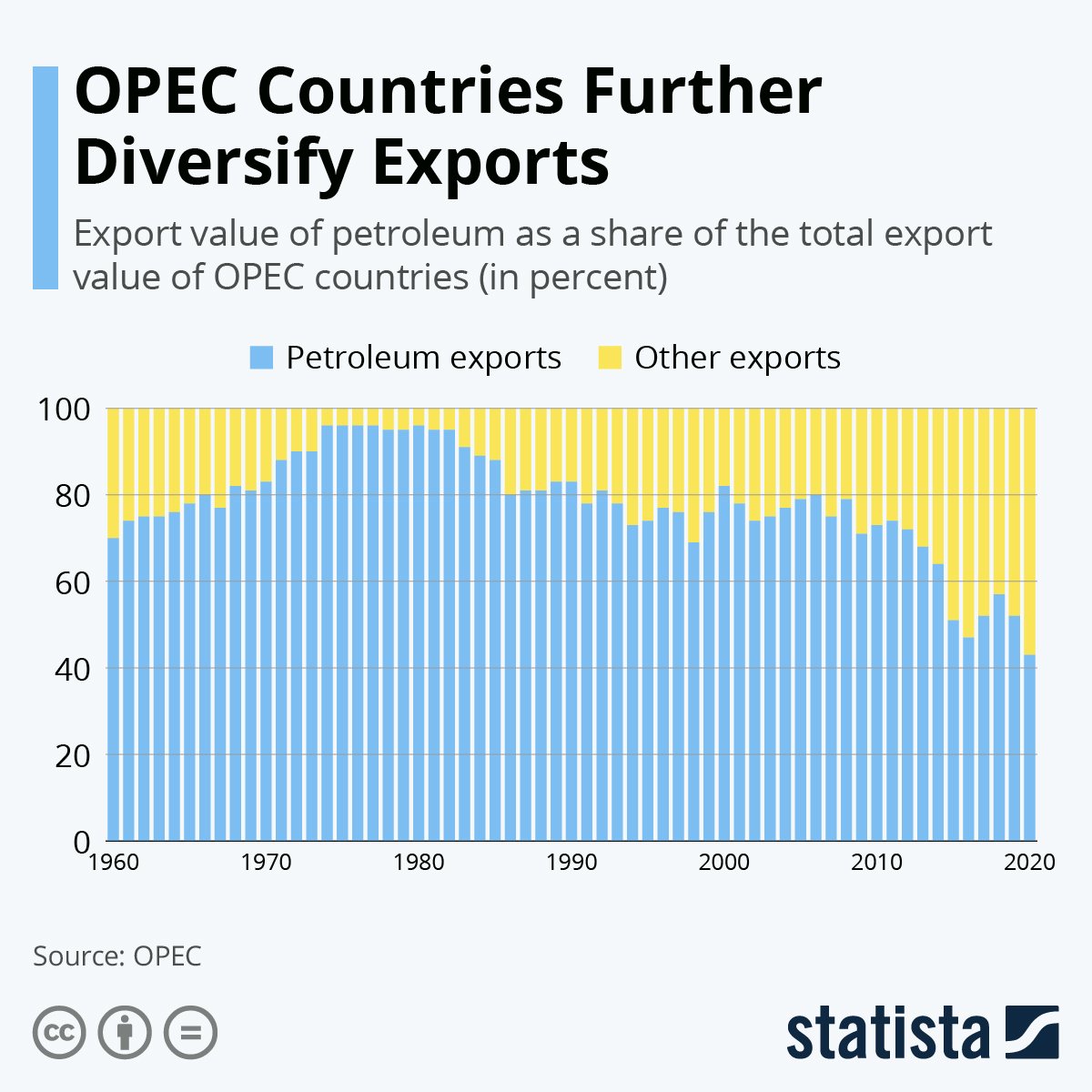The member states of the Organization of the Petroleum Exporting Countries, better known as OPEC, are less reliant on exports of oil and other petroleum products than ever before. According to the latest OPEC Annual Statistical Bulletin, OPEC members have further diversified their export portfolio in recent years, with petroleum products making up only 43 percent of OPEC exports in 2020.
While this certainly has to do with member countries exporting less oil at a lower price, which in turn automatically increased the share of other exports, exports other than oil have been growing in value in and of themselves. Non-petroleum exports from OPEC countries grew from only US$55 billion in 2000 to US$431 billion in 2020, while petroleum exports were down from a high of $1.1 trillion in 2012 to just $321 billion in 2020.
The decline of oil exports and the oil price have been a major factor in the diversification of OPEC. Member state Equatorial Guinea, for example, went from depending on oil almost entirely in 2000 to gaining only around 60 percent of export revenue from petroleum in 2020, now exporting chemical products and wood. Saudi Arabia diversified to some degree, adding polymers and other chemical industry products to its portfolio. The United Arab Emirates are currently only making 10 percent of export revenue from oil, relying on other raw materials like aluminum, gold and diamonds more heavily.
The coronavirus pandemic caused oil prices to plummet in addition to wreaking havoc on many economic sectors, leading to OPEC countries' exports falling significantly in 2020, with the value of oil exports especially affected. At the beginning of the global crisis, quarrels within OPEC over production cuts, eventually leading to a price war between Russia and Saudi Arabia, had sent the oil price to lows last seen 20 years ago.





















